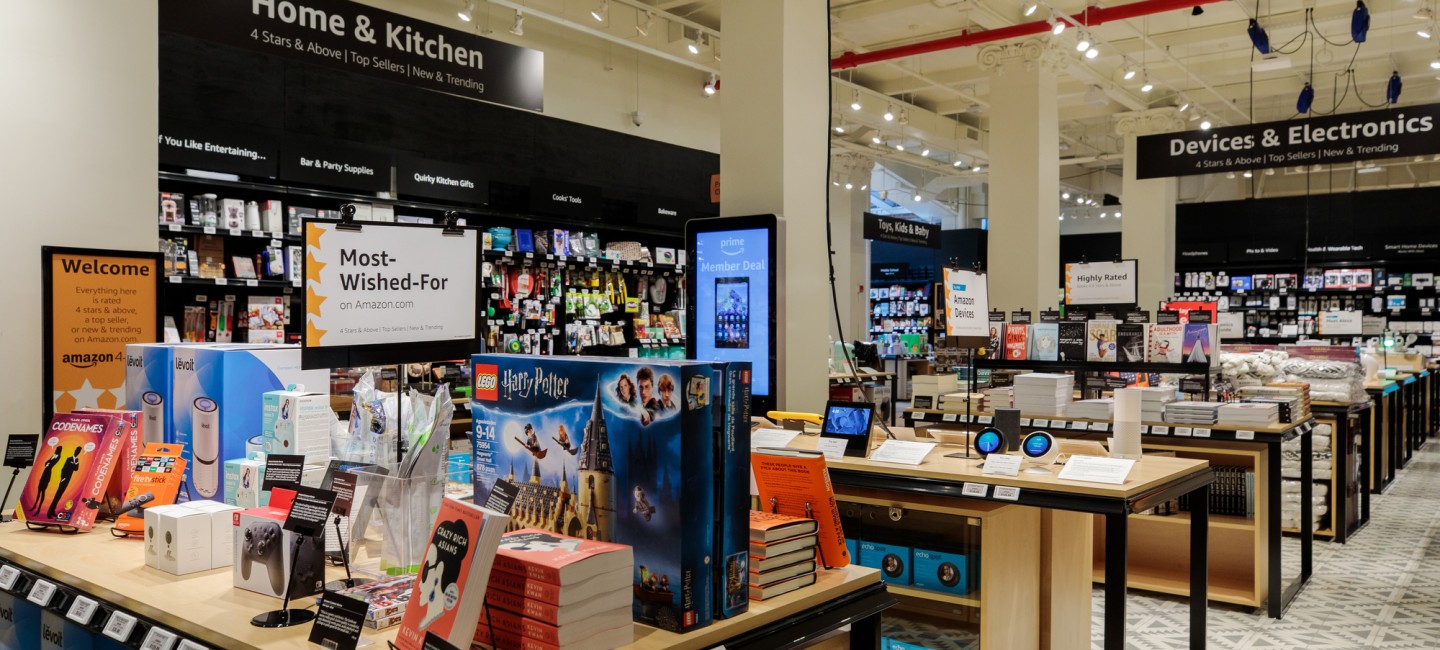The Digital Feedback Loop
Adam Shilton
By leveraging their own consumer data, savvy retailers are putting the customer at the heart of the shopping experience by offering hyper-personalised in-store experiences.
This September Amazon launched 4-Star, its latest physical store venture in New York’s SoHo neighbourhood. The concept which follows on from their Amazon Go and Amazon Books outlets differs from these previous forays into bricks & mortar by stocking a varied product mix, with each item being rated 4 stars or above by Amazon customers. This means that only the best, most highly rated and trending products will be available in-store. Amazon 4-Star will also contain products trending in the store’s local area as well as customer’s “most wished for” items as part of the changing product assortment.
Source: Amazon
What’s interesting about 4-Star though is that while Amazon’s previous physical retail ventures have mainly positioned innovation and technology centre stage (think the automated ‘just-walk-out’ payment story surrounding their Amazon Go stores) here it is the customer, and community of customers that sit at the very heart of the retail experience. By leveraging consumer data to stock products they know their customers already love, Amazon 4-Star both democratises the physical retail experience and creates the perfect retail feedback loop. Here Amazon’s customers have total control, as they directly influence and endorse the offering, which in turn directly influences and endorses other customers’ purchase decisions. To further validate the assortment, digital shelf-edge strips display reviews plus the in-store versus Amazon Prime pricing – which is always lower – meaning Prime members benefit from being part of the Amazon community, even in the real world.
Digitial shelf-edge pricing. Source: Amazon
Yet presenting relevant, engaging and curated product to the customer is hardly new news. Historically, the role of retailer has always been to anticipate demand in order to satisfy a need with customer feedback and the popularity of an assortment often benchmarking the success of a merchandising strategy. Over time, subsequent improvements to stock inventory systems, market research and customer loyalty schemes ultimately allowed retailers to better anticipate customer demand as they leveraged these more sophisticated tools, but winning decisions were still usually based on hindsight and the merchant’s experience. More art than science, and often based on a product centric approach rather than a customer centric one.
“As ‘retail prophet’ Doug Stephens eloquently puts it, “if media has become the store, now the store has to become media”.”
What 4-Star so articulately demonstrates then is that by leveraging customer data, Amazon has shrewdly given the customer that control – they become the merchandising strategy. It is the customer’s tastes and favoured products that are on offer rather than anything dictated by the merchant. The benefits of this methodology are obvious; not only is customer engagement and experience bolstered, but stock inventories and the supply chain can be streamlined to cater only to what the customer actually wants, all benefitting the bottom line. This retail approach also plays into the immediacy with which consumers are so used to shopping online and crucially connects the online / offline experiences into a single unified expression. As ‘retail prophet’ Doug Stephens eloquently puts it, “if media has become the store, now the store has to become media”.
Farfetch Store Of The Future. Source: Farfetch
Advancing this thinking further is luxury fashion marketplace Farfetch, another example of an online retailer making its mark on the physical retail landscape. By leveraging their access to big data (15,000 data points are collected in an average 5 minute online shop according to industry insiders) Farfetch aim is to provide an unparalleled level of personalisation via engaging digital interactions at key touchpoints throughout the store. Described as an ‘operating system’ for physical retail, RFID enabled rails, magic mirrors and existing customer data will help guide customer’s in-store selections and close the loop on Farfetch’s omnichannel experience by creating a complete online / offline ecosystem for the brand.
The retailers who will thrive in the coming years therefore will be those who redefine and reimagine their store experiences in order to build more personalised relationships with their customer. In a post digital world, the adoption of consumer data and analytics to help facilitate this and streamline business decisions is vital. And while data privacy and GDRP are quite rightly of paramount importance, the use of customer data to enhance the physical shopping experience is becoming less an option and more a necessity.



